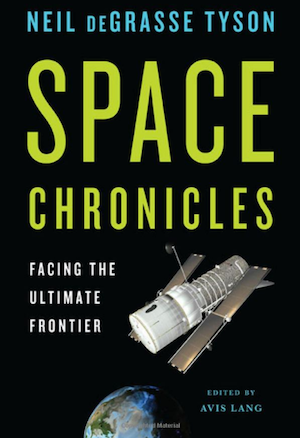Invisible Man is a novel written by Ralph Ellison, and the only one that he published during his lifetime (his other novels were published posthumously). It won him the National Book Award in 1953. The novel addresses many of the social and intellectual issues facing African-Americans in the early twentieth century, including black nationalism, the relationship between black identity andMarxism, and the reformist racial policies of Booker T. Washington, as well as issues of individuality and personal identity.
In 1998, the Modern Library ranked Invisible Man nineteenth on its list of the 100 best English-language novels of the 20th century.Time magazine included the novel in its TIME 100 Best English-language Novels from 1923 to 2005.[1]
Historical background
In his introduction to the 30th Anniversary Edition of Invisible Man,[2] Ellison says that he started writing the book in a barn in Waitsfield, Vermont in the summer of 1945 while on sick leave from the Merchant Marine and that the novel continued to preoccupy him in various parts of New York City. In an interview in The Paris Review 1955,[3] Ellison states that the book took five years to complete with one year off for what he termed an "ill-conceived short novel." Invisible Man was published as a whole in 1952; however, copyright dates show the initial publication date as 1947, 1948, indicating that Ellison had published a section of the book prior to full publication. That section was the famous "Battle Royal" scene, which had been shown to Cyril Connolly, the editor of Horizon magazine by Frank Taylor, one of Ellison's early supporters.
Ellison states in his National Book Award acceptance speech that he considered the novel's chief significance to be its experimental attitude. Rejecting the idea of social protest—as Ellison would later put it—he did not want to write another protest novel, and also seeing the highly regarded styles of Naturalism and Realism too limiting to speak to the broader issues of race and America, Ellison created an open style, one that did not restrict his ideas to a movement but was more free-flowing in its delivery. What Ellison finally settled on was a style based heavily upon modern symbolism. It was the kind of symbolism that Ellison first encountered in the poem The Waste Land,[4] by T. S. Eliot. Ellison had read this poem as a freshman at the Tuskegee Institute and was immediately impressed by The Waste Land's ability to merge his two greatest passions, that of music and literature, for it was in The Waste Land that he first saw jazz set to words. When asked later what he had learned from the poem, Ellison responded: imagery, and also improvisation—techniques he had only before seen in jazz.
Ellison always believed that he would be a musician first and a writer second, and yet even so he had acknowledged that writing provided him a "growing satisfaction." It was a "covert process," according to Ellison: "a refusal of his right hand to let his left hand know what it was doing."[5]
[edit] Plot introduction
Invisible Man is narrated in the first person by the protagonist, an unnamed African American man who considers himself socially invisible. His character may have been inspired by Ellison's own life. The narrator may be conscious of his audience, writing as a way to make himself visible to mainstream culture; the book is structured as if it were the narrator's autobiography although it begins in the middle of his life.
The story is told from the narrator's present, looking back into his past. Thus, the narrator has hindsight in how his story is told, as he is already aware of the outcome.
In the Prologue, Ellison's narrator tells readers, "I live rent-free in a building rented strictly to whites, in a section of the basement that was shut off and forgotten during the nineteenth century." In this secret place, the narrator creates surroundings that are symbolically illuminated with 1,369 lights. He says, "My hole is warm and full of light. Yes, full of light. I doubt if there is a brighter spot in all New York than this hole of mine, and I do not exclude Broadway." The protagonist explains that light is an intellectual necessity for him since "the truth is the light and light is the truth." From this underground perspective, the narrator attempts to make sense out of his life, experiences, and position in American society.
[edit] Plot summary
In the beginning, the main character lives in a small town in the South. He is a model student, even being named his high school's valedictorian. Having written and delivered an excellent paper about the struggles of the average black man, he gets to tell his speech to a group of white men, who force him to participate in a series of degrading events. After finally giving his speech, he gets a scholarship to an all-black college that is clearly modeled on the Tuskegee Institute.
During his junior year at the college, the narrator takes Mr. Norton, a visiting rich white trustee, on a drive in the country. He accidentally drives to the house of Jim Trueblood, a black man living on the college's outskirts, who impregnated his own daughter. Trueblood, though disgraced by his fellow blacks, has found greater support from whites. After hearing Trueblood's story and giving Trueblood a hundred dollar bill, Mr. Norton faints, then asks for some alcohol to help his condition, prompting the narrator to take him to a local tavern. At the Golden Day tavern, Norton passes in and out of consciousness as World War I veterans being treated at the nearby mental hospital for various mental health issues occupy the bar and a fight breaks out among them. One of the veterans claims to be a doctor and tends to Mr. Norton. The dazed and confused Mr. Norton is not fully aware of what’s going on, as the veteran doctor chastises the actions of the trustee and the young black college student. Through all the chaos, the narrator manages to get the recovered Mr. Norton back to the campus after a day of unusual events.
Upon returning to the school he is fearful of the reaction of the day's incidents from college president Dr. Bledsoe. At any rate, insight into Bledsoe's knowledge of the events and the narrator's future at the campus is somewhat prolonged as an important visitor arrives. The narrator views a sermon by the highly respected Reverend Homer A. Barbee. Barbee, who is blind, delivers a speech about the legacy of the college's founder, with such passion and resonance that he comes vividly alive to the narrator; his voice makes up for his blindness. The narrator is so inspired by the speech that he feels impassioned like never before to contribute to the college's legacy. However, all his dreams are shattered as a meeting with Bledsoe reveals his fate. Fearing that the college's funds will be jeopardized by the incidents that occurred, Bledsoe immediately expels the narrator. While the Invisible Man once aspired to be like Bledsoe, he realizes that the man has portrayed himself as a black stereotype in order to succeed in the white-dominated society. This serves as the first epiphany among many in the narrator realizing his invisibility. This epiphany is not yet complete when Bledsoe gives him several letters of recommendation to help him get a job under the assumption that he could return upon earning enough money for the next semester. Upon arriving in New York, the narrator distributes the letters with no success. Eventually, the son of one of the people to whom he sent a letter takes pity on him and shows him an opened copy of the letter; it reveals that Bledsoe never had any intentions of letting the narrator return and sent him to New York to get rid of him.
Acting upon the son's suggestion, the narrator eventually gets a job in the boiler room of a paint factory in a company renowned for its white paints. The man in charge of the boiler room, Lucius Brockway, is extremely paranoid and thinks that the narrator has come to take his job. He is also extremely loyal to the company's owner, who once paid him a personal visit. When the narrator tells him about a union meeting he happened upon, Brockway is outraged, and attacks him. They fight, and Brockway tricks him into turning a wrong valve and causing a boiler to explode. Brockway escapes, but the narrator is hospitalized after the blast. While recovering, the narrator overhears doctors discussing him as a mental health patient. He learns through their discussion that shock treatment has been performed on him.
After the shock treatments, the narrator attempts to return to his residence when he feels overwhelmed by a certain dizziness and faints on the streets of Harlem. He is taken to the residence of a kind, old-fashioned woman by the name of Mary. Mary is down-to-earth and reminds the narrator of his relatives in the South and friends at the college. Mary somewhat serves as a mother figure for the narrator. While living there, he happens upon an eviction of an elderly black couple and makes an impassioned speech decrying the action. Soon, however, police arrive, and the narrator is forced to escape over several building tops. Upon reaching safety, he is confronted by a man named Jack who followed him and implores him to join a group called The Brotherhood that is a thinly veiled version of the Communist Party and claims to be committed to social change and betterment of the conditions in Harlem. The narrator agrees.
The narrator is at first happy to be making a difference in the world, "making history," in his new job. While for the most part his rallies go smoothly, he soon encounters trouble from Ras the Exhorter, a fanatical black nationalist in the vein of Marcus Garvey who believes that the Brotherhood is controlled by whites. Ras tells this to the narrator and Tod Clifton, a youth leader of the Brotherhood, neither of whom seem to be swayed by his words.
When he returns to Harlem, Tod Clifton has disappeared. When the narrator finds him, he realizes that Clifton has become disillusioned with the Brotherhood, and has quit. Clifton is selling dancing Sambo dolls on the street, mocking the organization he once believed in. He soon dies. At Clifton's funeral, the narrator rallies crowds to win back his former widespread Harlem support and delivers a rousing speech. However, he is criticized in a clandestine meeting with Brother Jack and other members for not being scientific in his arguments at the funeral; angered, he begins to argue in retaliation, causing Jack to lose his temper and accidentally make his glass eye fly out of one of his sockets. The narrator realizes that the half-blind Jack has never really seen him either.
He buys sunglasses and a hat as a disguise, and is mistaken for a man named Rinehart in a number of different scenarios: first, as a lover, then, a hipster, a gambler, a briber, and, finally, as a reverend. He sees that Rinehart has adapted to white society, at the cost of his own identity.He decides to take his grandfather's dying advice to "overcome 'em with yeses, undermine 'em with grins, agree 'em to death and destruction. . ." and "yes" the Brotherhood to death, by making it appear that the Harlem membership is thriving when in reality it is crumbling. However, he soon realizes the cost of this action: Ras becomes a powerful demagogue. After escaping Ras (by throwing a spear Ras had acquired through the leader's jaw, permanently sealing it), the narrator is attacked by a couple of people who trap him inside a coal-filled manhole/basement, sealing him off for the night and leaving him alone to finally confront the demons of his mind: Bledsoe, Norton, and Jack.
At the end of the novel, the narrator is ready to resurface because "overt action" has already taken place. This could be that, in telling us the story, the narrator has already made a political statement where change could occur. Storytelling, then, and the preservation of history of these invisible individuals is what causes political change.







